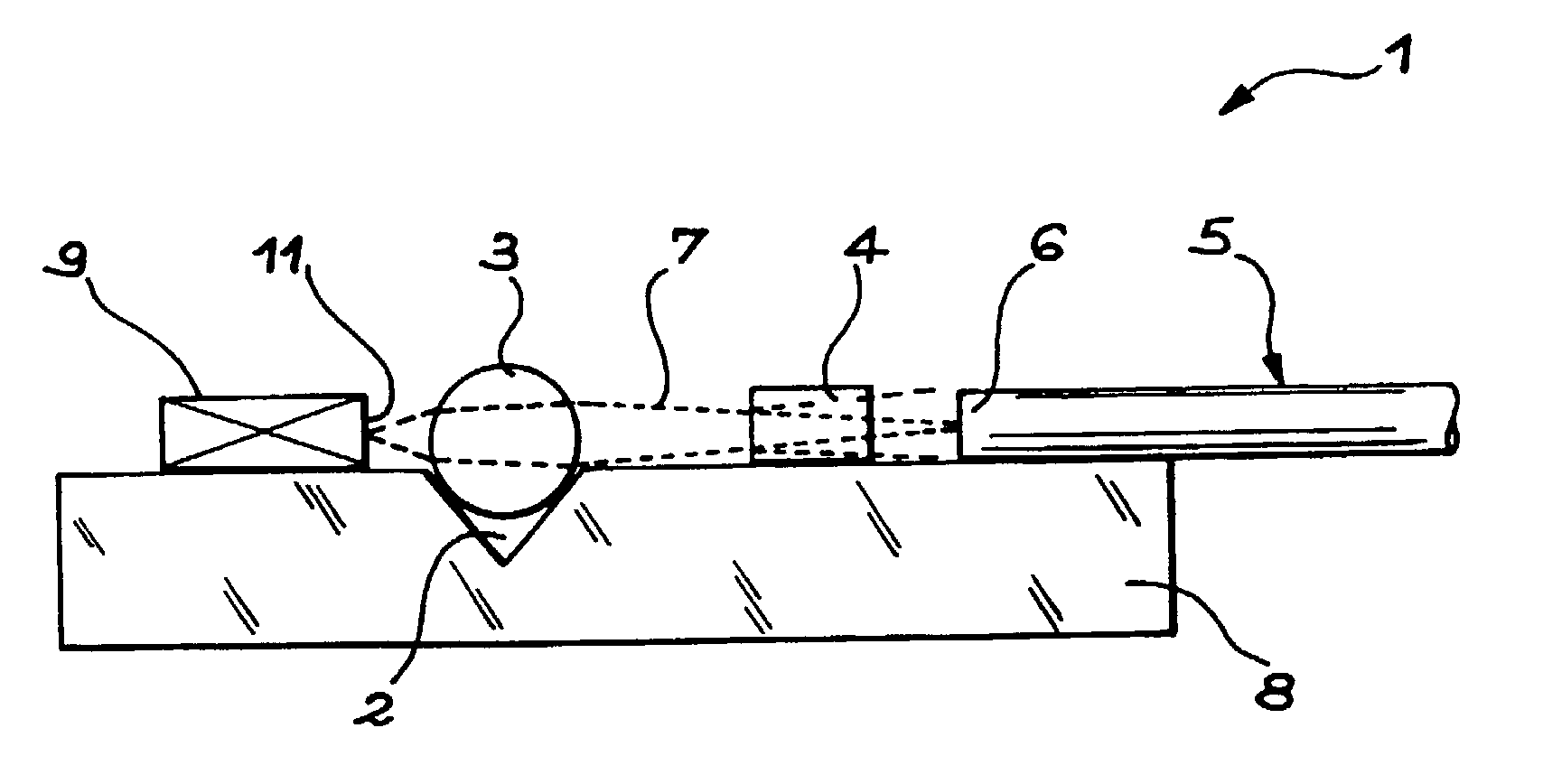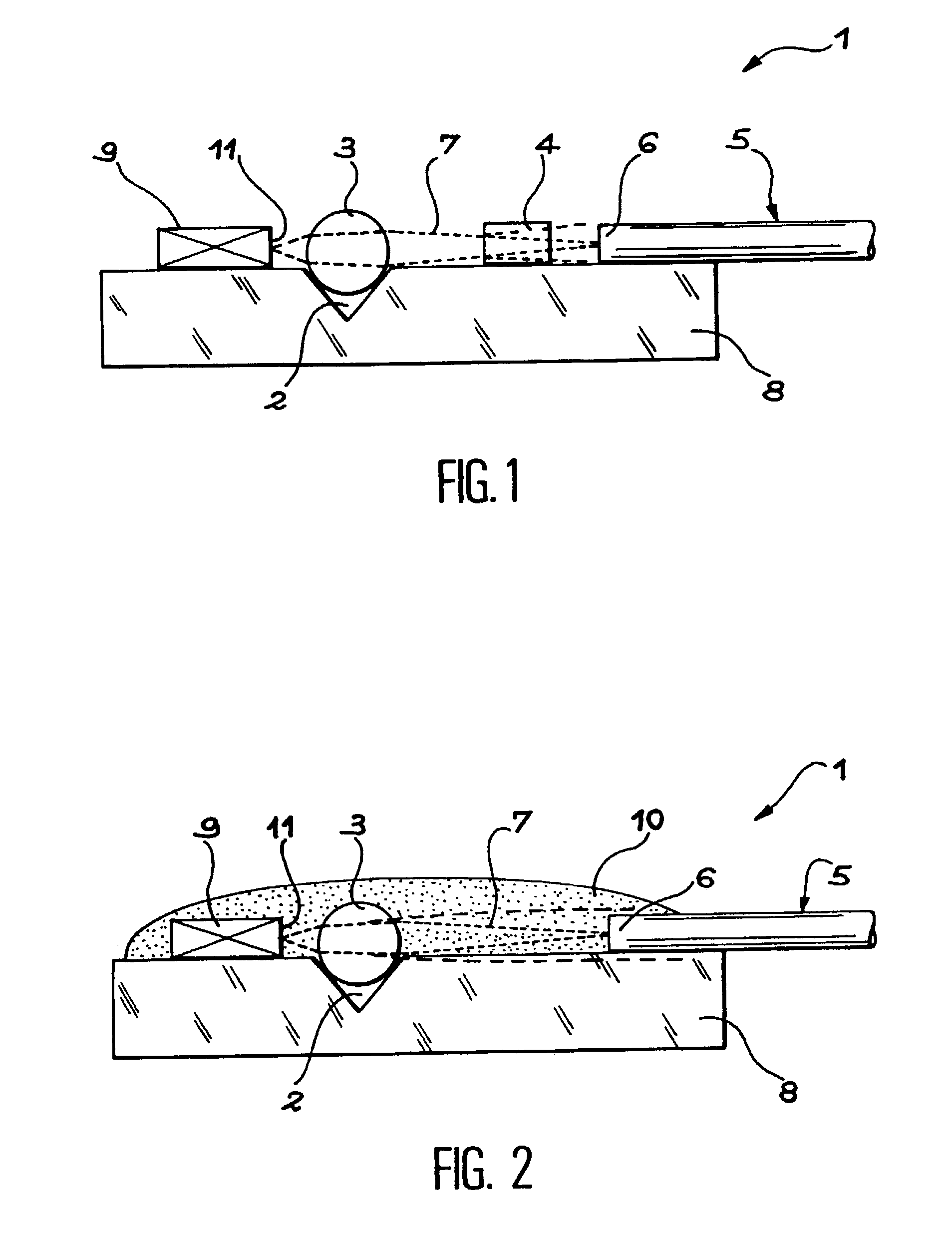Passive compensating coupling laser device
a coupling laser and compensating technology, applied in semiconductor lasers, instruments, lenses, etc., can solve the problems of unsuitable for inexpensive modules, unsuitable for mirrors with less, and complex regulation loops, and achieve the effect of small overall siz
- Summary
- Abstract
- Description
- Claims
- Application Information
AI Technical Summary
Benefits of technology
Problems solved by technology
Method used
Image
Examples
Embodiment Construction
[0027]FIG. 1 represents a diagrammatic sectional view of a portion of a module 1. An optoelectronic component 9, for example a laser diode, is mounted on a base 8 in order to communicate with a laser fiber 5. This is known in the art.
[0028]According to the invention, a block 4 of a material having a refractive index that varies linearly with temperature is inserted in an optical path 7 and, when there is a lens 3 on the optical path, in series with the lens.
[0029]In the examples to be described it is assumed that the external efficiency of the laser decreases with temperature, which is the most usual case. The maximum coupling between the fiber 5 and the component 9 then corresponds to the highest designed operating temperature. The maximum coupling can be obtained with a medium whose index decreases as the temperature increases.
[0030]In the example shown the lens 3 couples an end 6 of the optical fiber and a face 11 of the laser diode 9. The lens 3 is placed at the bottom of a rece...
PUM
 Login to View More
Login to View More Abstract
Description
Claims
Application Information
 Login to View More
Login to View More - R&D
- Intellectual Property
- Life Sciences
- Materials
- Tech Scout
- Unparalleled Data Quality
- Higher Quality Content
- 60% Fewer Hallucinations
Browse by: Latest US Patents, China's latest patents, Technical Efficacy Thesaurus, Application Domain, Technology Topic, Popular Technical Reports.
© 2025 PatSnap. All rights reserved.Legal|Privacy policy|Modern Slavery Act Transparency Statement|Sitemap|About US| Contact US: help@patsnap.com



